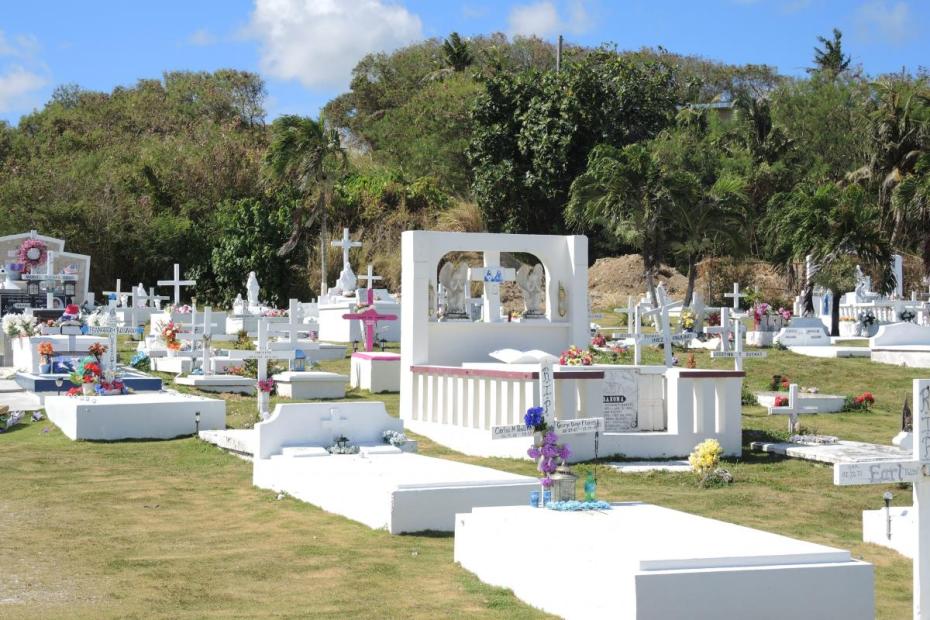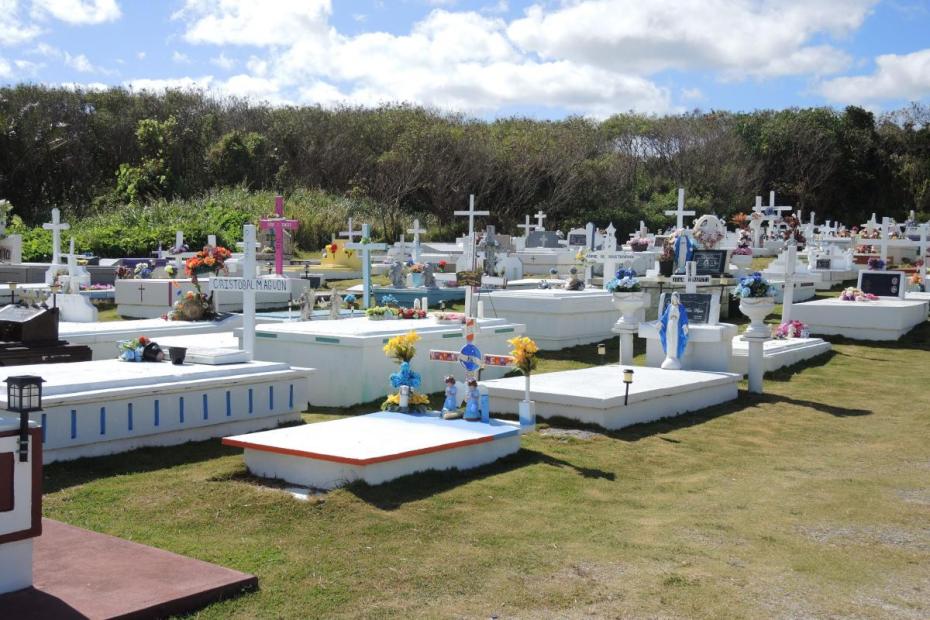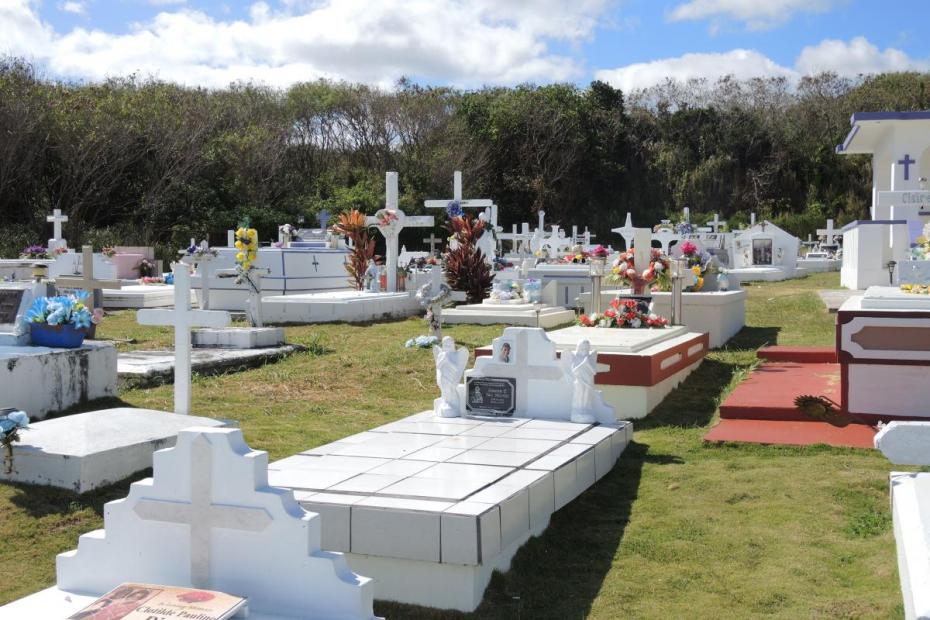“Death is the single most obligatory event in Chamorro social life. If you don't attend a wedding, if you don't attend a baptism [that can be forgiven.] It is not forgivable not to attend a funeral. It's unforgivable because that is the most sacred of familial obligations — to honor the dead.”
If there were one theme that came across most clearly in interviews about the relationship between Catholicism and Chamorro culture, it was the importance of honoring the dead.1 The woman quoted in the epigraph above, a young mother who had lived on the U.S. mainland as a college student, was taken aback when she saw how differently U.S. peers related to death. Most students she had known in college had been to a funeral once, if at all, stateside. “Here it's ... It's like every weekend there's a funeral that we need to attend. Our kids come to them. Our kids, my 6 year old, has probably been to 50 funerals, and it's not something gross and weird. I grew up like that. It wasn't weird to just sit around a dead body. It's part of life.”
Her aunt chimed in, “You never felt like it was something that you needed to protect [children] from.”
She and other interviewees who were knowledgeable in Chamorro culture suggested that these attitudes toward death were the overlapping legacy of both Chamorro and Spanish cultures. Funeral practice “was one of the places where Catholic practice and Chamorro practice shook hands early on because the honoring of the dead, that was very sacred to the ancient Chamorro culture. The presence of dead bodies in the homes was very prevalent because you honored them before you buried them, and you buried them right under your house. Then you revered, you venerated the skulls of the ancestors. That was the ancient practice. When Catholicism comes with this whole panoply of saints that they brought over, it was very easy to accommodate because we are a people of genealogy and kinship, and we reckon those relationships very, very carefully.”
“To have Saints that you honor, and spirits of people who've died like St. Anthony, and St. Joseph, and Santa Maria, that was very much in the Chamorro psyche in the first place,” another reported.
Interviewees talked about the spirit of the saints, including their dead loved ones, as being very much with us. Some interviewees even recounted stories of ancestral appearances that had occurred at key moments of their lives. They described these not as haunting events, but as moments of presence, when they received a message from the spirit of a deceased relative who needed or to share it, or simply wanted to comfort them.
On Guam, All Souls Day is still treated as a “big feast day,” interviewees reported. “Everyone goes in and decorates the tombstones, cleans them up, and then celebrates Mass.” If tombs have been left unattended, as has happened in places from time to time, that is considered a big problem.
Burial and remembrance
Embalming and burial is the traditional form of handling the remains of the dead, but in the last decade increasing numbers of the dead have been cremated instead. Interviewees talked about a growing trend to “personalize” funerals to reflect the personality and hobbies of deceased, a trend that parallels contemporary burial practices in the mainland U.S.A. One interviewee, a man who assisted professionally at funerals, saw this as a way that Chamorro culture was being undermined.
Funerals typically begin with a viewing of the body in an open casket in the morning. The viewing begins and ends with a Rosary, and includes a brunch in the middle. The funeral Mass typically follows at noon or 1 p.m.
The public, ritualized remembrance of the dead does not end at the graveside. For Protestants, apparently, the remembrance goes on for three nights, but for Catholics, there needs to be time for a whole novena. Public prayer and remembrance thus lasts nine days and nights after the funeral, with one, or perhaps two, Rosaries a day: an optional one at noon for the family only, and one in the evening for all comers, either at home or at church. On the third day of the Rosary, all the grandchildren typically wear red, which is an old custom of unclear origin or meaning. Some interviewees even remembered being told stories years ago that the dead might come back or send a sign three days later to send a message about something important that’s unfinished, but no one had experienced that.
It is customary that the family arrange to serve food to those who come in the evening. One interviewee recalled that his brother, who died in 2008, had an insurance policy to cover the cost of the nine nights. To “do it right, the traditional way… we fed everybody and we totaled it and we spent almost 60 grand … Usually when you go to Rosaries the food that’s being served is just light refreshment, appetizers, that stuff. He wanted solid food… and an open bar… he was a very popular person.”
The story of the insurance policy notwithstanding, friends and family are expected to contribute to each other’s funerals — $50 or $100 — and people pay attention to who has been to whose and who contributes, or doesn’t.
- 1The articles on Guam are the product of 14 extended interviews and many more informal conversations during two research visits in March and December 2017.


